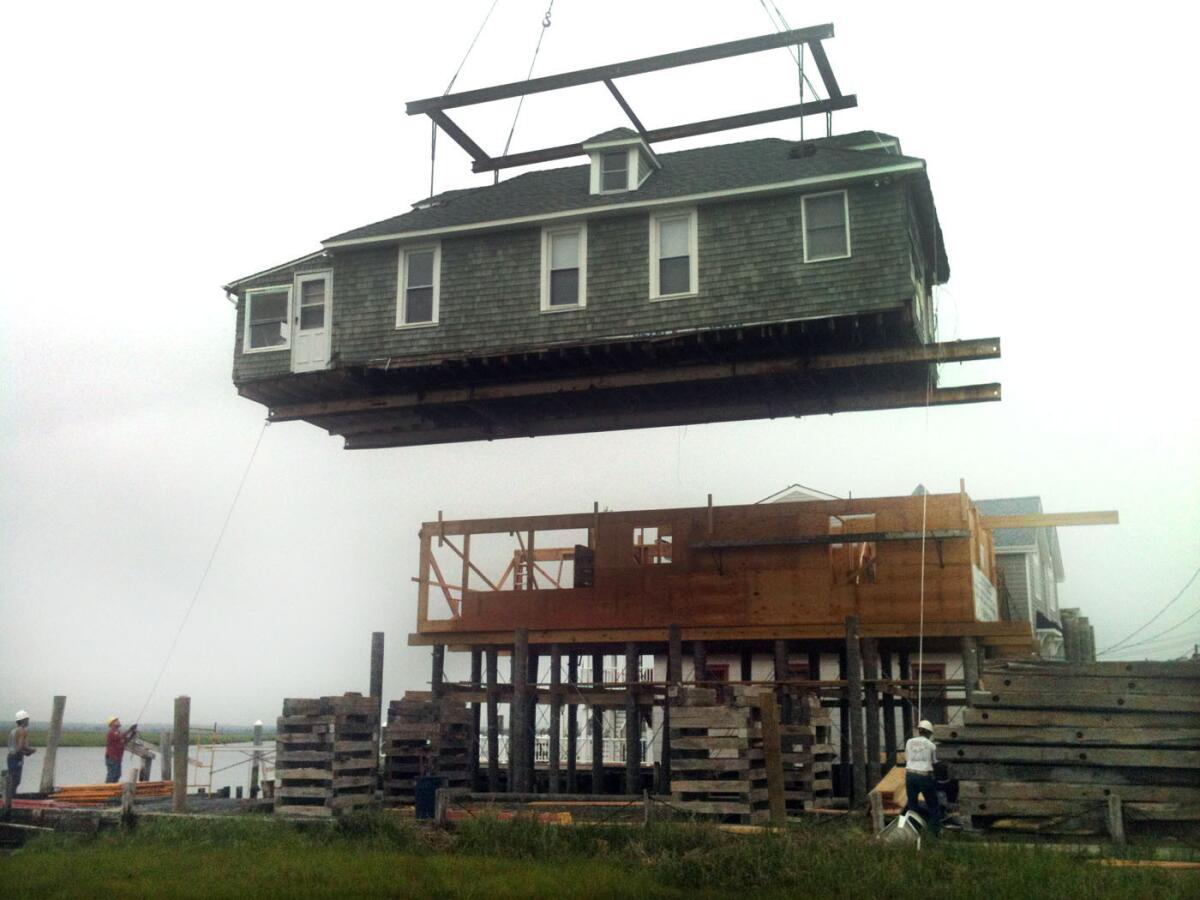Feds don’t do enough to prepare for severe weather, report says

- Share via
WASHINGTON — Federal efforts to bolster community preparedness for extreme weather events are a fraction of what the government spends on cleaning up the damage from storms, tornadoes and drought, according to a new analysis of federal data by the Center for American Progress, a left-leaning Washington think tank.
The report estimated that from 2011 to 2013, the federal government spent about $136 billion on weather-related disaster relief and recovery but only $22.4 billion on a total of 43 preparedness programs, or about $6 in cleanup for every $1 spent on strengthening defenses or preventing or mitigating damage.
A growing body of climate science indicates that the warming atmosphere increases the likelihood of extreme weather-related events. In January, the National Climate Assessment, issued every four years by a federal advisory group, predicted more of the heavier rains in the Northeast, Midwest and Plains that have overwhelmed storm drains and led to flooding and erosion; sea-level rise that has battered coastal communities around the United States; drought that has turned much of the West into a tinderbox.
PHOTOS: 2013’s memorable political moments
Some states and localities have launched their own so-called resiliency efforts, or plans to reduce the effects of weather-related disasters. Last week, New York City announced a $20-billion plan to protect against severe storms, including protecting the shoreline, buildings and electricity infrastructure. On Monday, a group of 45 localities including Atlanta; El Paso, Texas; and Dubuque, Iowa, launched a group, Resilient Communities for America, where they would set goals to improve resiliency and share their best practices and resources.
New York and New Jersey will be able to rely in great part on federal disaster funds allocated after Superstorm Sandy, but other places have to scramble for funding, local leaders and the Center for American Progress say.
“We must increase the federal investment in community resilience to reduce fatalities and the economic damage wrought by extreme weather events,” the report said. “Every threatened community should become as resilient as New York City and New Jersey will be due to federal investments in their efforts.”
Preparing for disasters is costly, the report notes. For instance, the town of Edna, Texas, built a hurricane shelter big enough to protect its 5,500 residents from 300-mile-per-hour winds. The project cost $2.5 million, 75% of it provided by the Federal Emergency Management Agency, which plans to invest about $680 million to build similar facilities in 18 other states.
The report found that of the $22.4 billion set aside for 43 federal programs aimed at building disaster resiliency, more than half, or $12 billion, was for Agriculture Department programs that foster sustainable agriculture and protect water resources from the effects of drought and floods. The remainder went to agencies such as Defense, Commerce, Homeland Security and Interior.
Several programs had their funding cut from fiscal year 2011 to 2013, including two Interior Department wildfire management efforts. The reductions were largely to programs in agencies other than the Agriculture Department.
The study found that from fiscal year 2011 to fiscal year 2013, funding for preparedness programs that were not in the Agriculture department fell about $160 million.
The report recommends that a comprehensive assessment be undertaken to get a picture of local preparedness needs. It also recommends that a dedicated fund be created to support community resiliency projects, financed by a small increase in the royalty rate that companies pay for extracting fossil fuels from federal lands and waters.
Follow Politics Now on Twitter and neela.banerjee@latimes.comTwitter: @neelaeast
More to Read
Get the L.A. Times Politics newsletter
Deeply reported insights into legislation, politics and policy from Sacramento, Washington and beyond. In your inbox twice per week.
You may occasionally receive promotional content from the Los Angeles Times.











